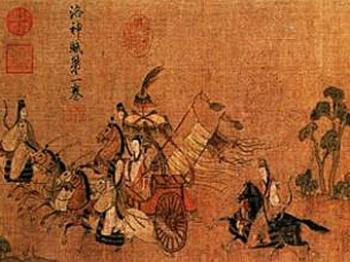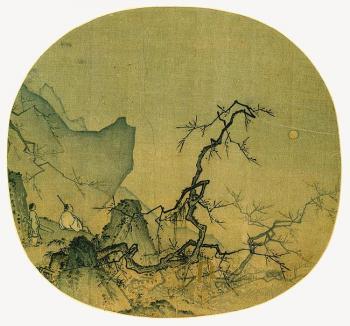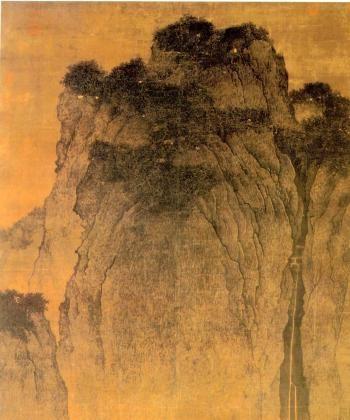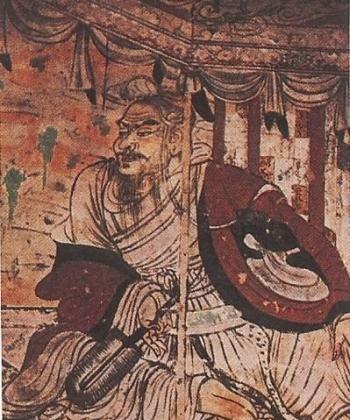Gu Kaizhi (c. 345-405), was born in Wuxi, Jiangsu province and is believed to be the founder of traditional Chinese painting. By 366, he had become a government officer and was later promoted to royal official. Gu’s paintings significantly influenced later traditional Chinese paintings.
Based on historical stories, Gu painted more than 70 paintings, including those of Buddha, human figures, birds, animals, mountains and rivers. None of his original works have survived to this day, but he has still acquired legendary status as a great Chinese painter.
“Nymph of the Luo River,” one of Gu’s most famous paintings, is credited by many traditional Chinese art historians as being one of the first and most influential Chinese landscape paintings. Only five copies of the paintings exist around the world, two of the most famous ones on display at the Freer Gallery in Washington D.C. and the National Palace Museum in Taipei.
The theme of ‘Nymph of the Luo River’ comes from the poem ‘Ode to the Nymph of the Luo River’ written by Cao Zhi, son of the King of Wei Cao Cao, during the Three Kingdoms period. The painting depicts the meeting between Cao Zhi and the Goddess Luoshen at Luo River. It vividly captures the mood of their first meeting and eventual separation.
In this painting, Gu paid much attention to the expressions of his subjects in order to convey their spirit. He also concentrated on painting human figures with sensitivity and grace, so delicate figures in the painting seem to float on the surface of the scroll.
“Nymph of the Luo River” best illustrates Gu’s most famous saying “Yi Xing Xie Shen,“ which means ”seeking the spirit through outward appearance.” It captured Gu’s strong belief that there is a spiritual side to painting which is beyond the reach of an artisan.


!["] <a><img src="https://www.theepochtimes.com/assets/uploads/2015/09/loushentu2.jpg" alt="DIVINE: Chinese painter Gu Kaizhi depicts a prince encountering a goddess at a river. (Courtesy of Tony Dai) [Please click on Picture to see undistorted version]" title="DIVINE: Chinese painter Gu Kaizhi depicts a prince encountering a goddess at a river. (Courtesy of Tony Dai) [Please click on Picture to see undistorted version]" width="320" class="size-medium wp-image-1834318"/></a>](/_next/image?url=https%3A%2F%2Fwww.theepochtimes.com%2Fassets%2Fuploads%2F2015%2F09%2Floushentu2.jpg&w=1200&q=75)
![DIVINE: Chinese painter Gu Kaizhi depicts a prince encountering a goddess at a river. (Courtesy of Tony Dai) [Please click on Picture to see undistorted version] DIVINE: Chinese painter Gu Kaizhi depicts a prince encountering a goddess at a river. (Courtesy of Tony Dai) [Please click on Picture to see undistorted version]](https://www.theepochtimes.com/assets/uploads/2015/09/loushentu2.jpg)




Friends Read Free